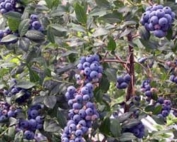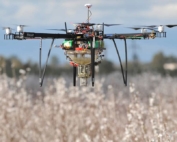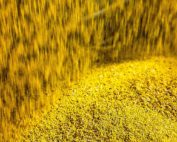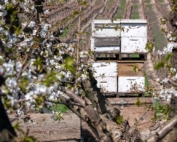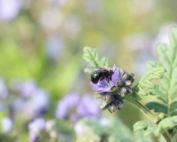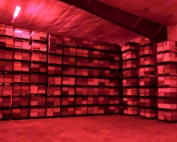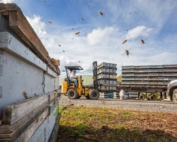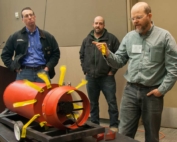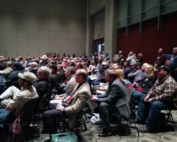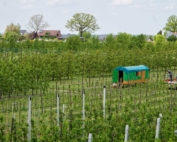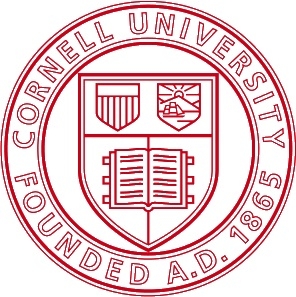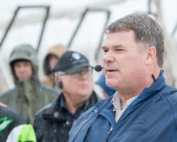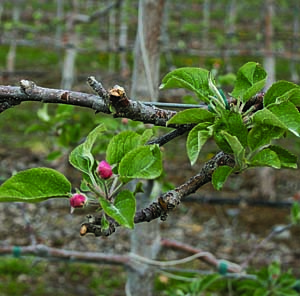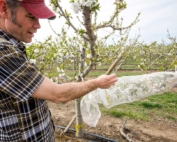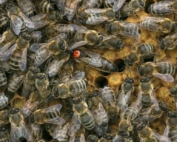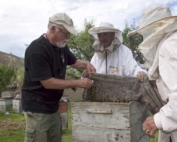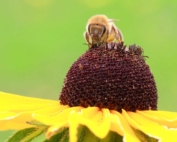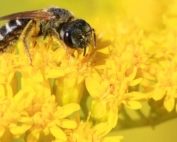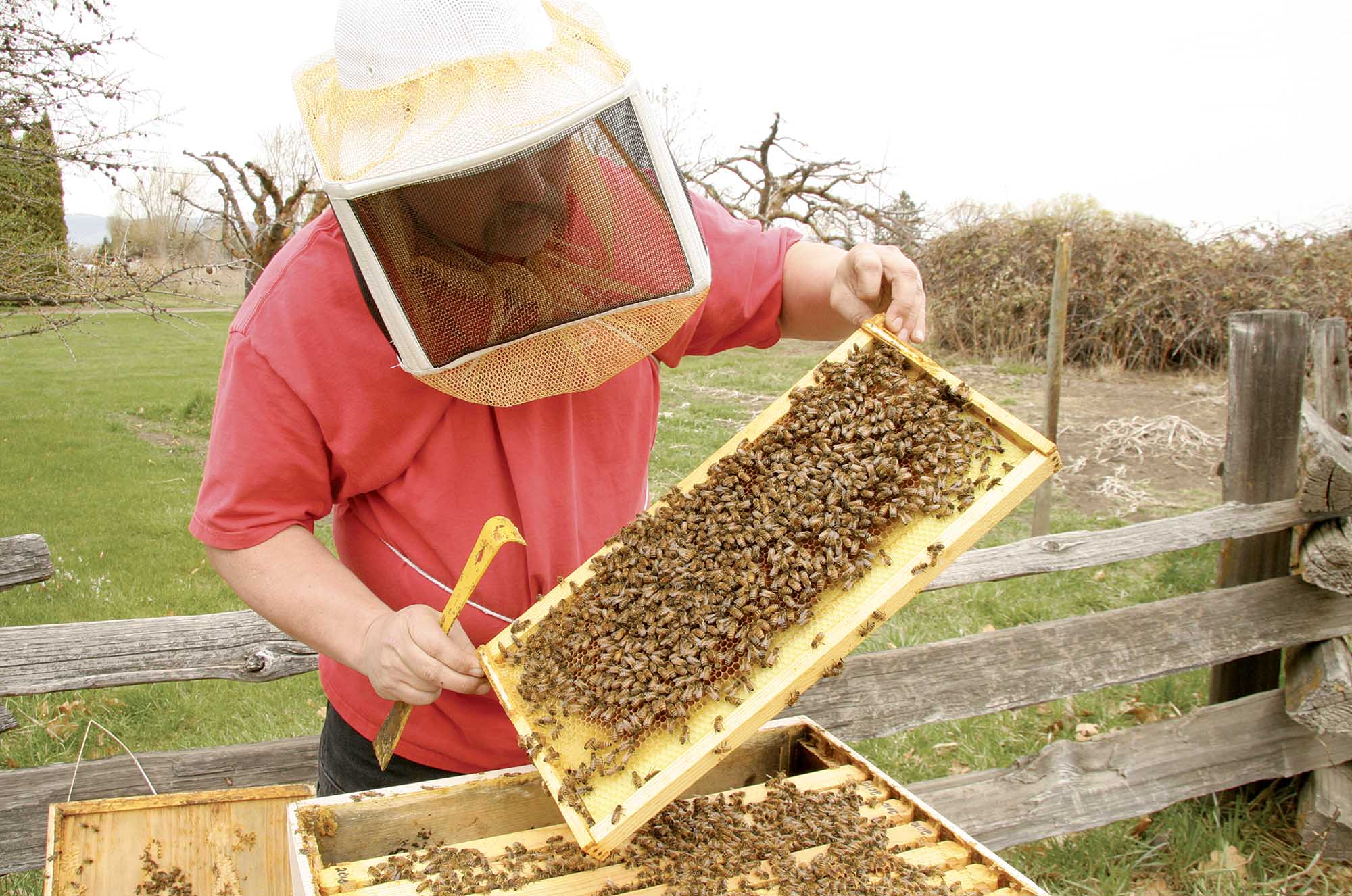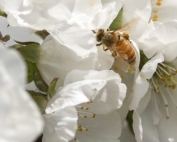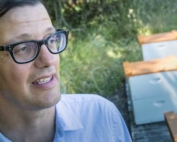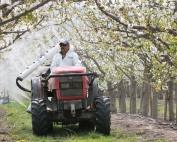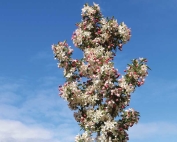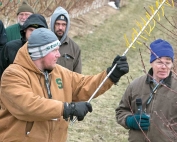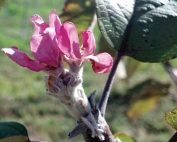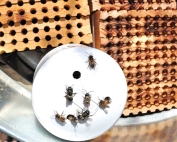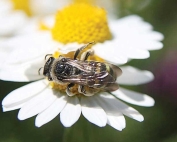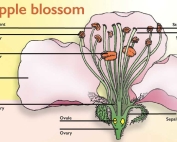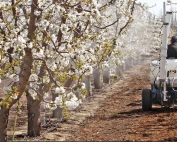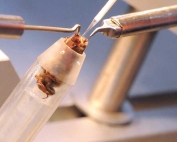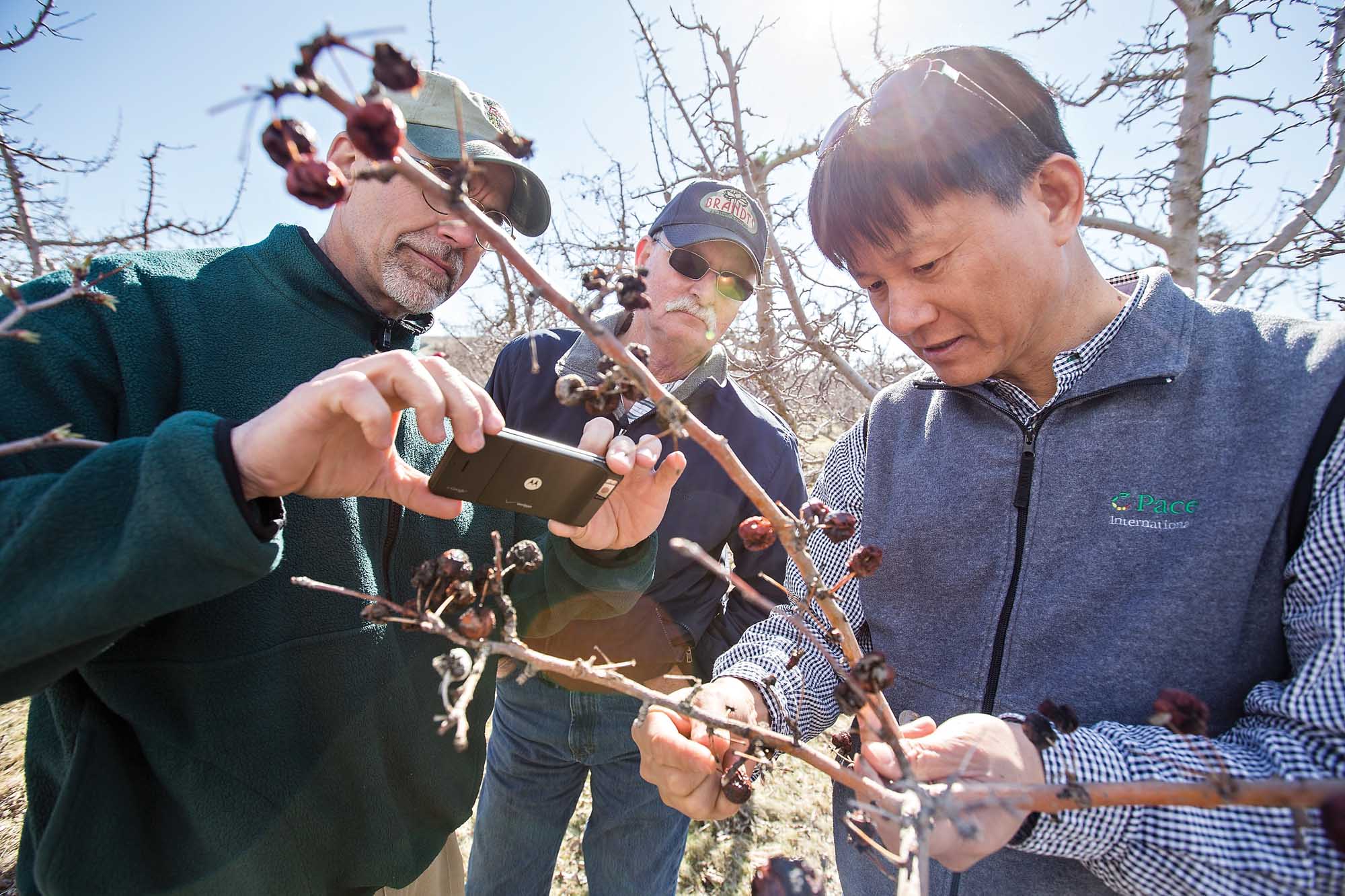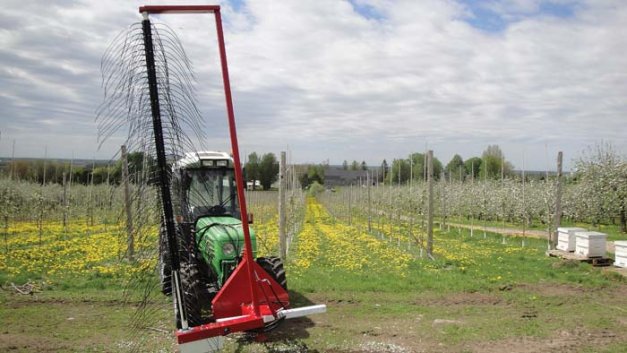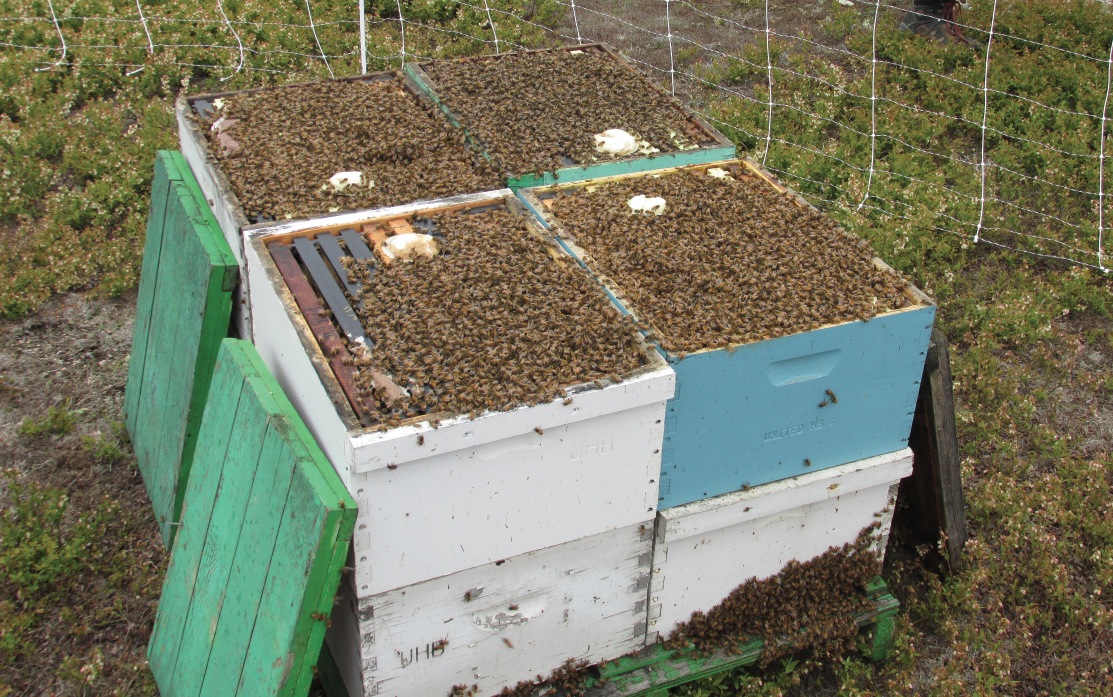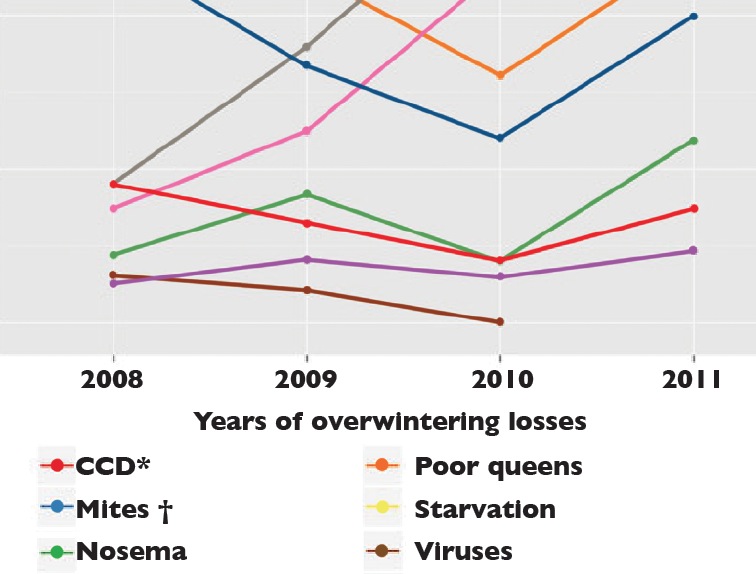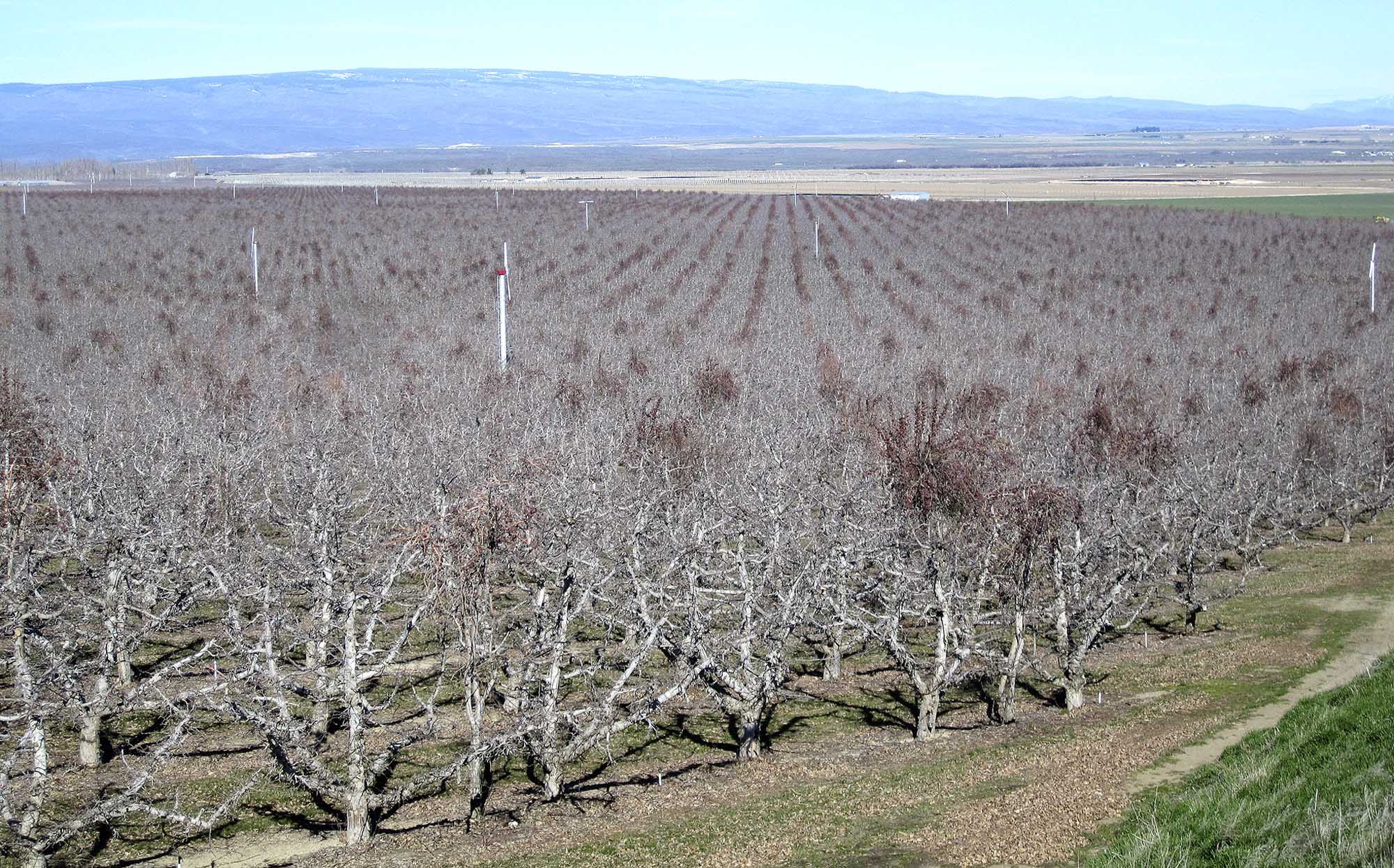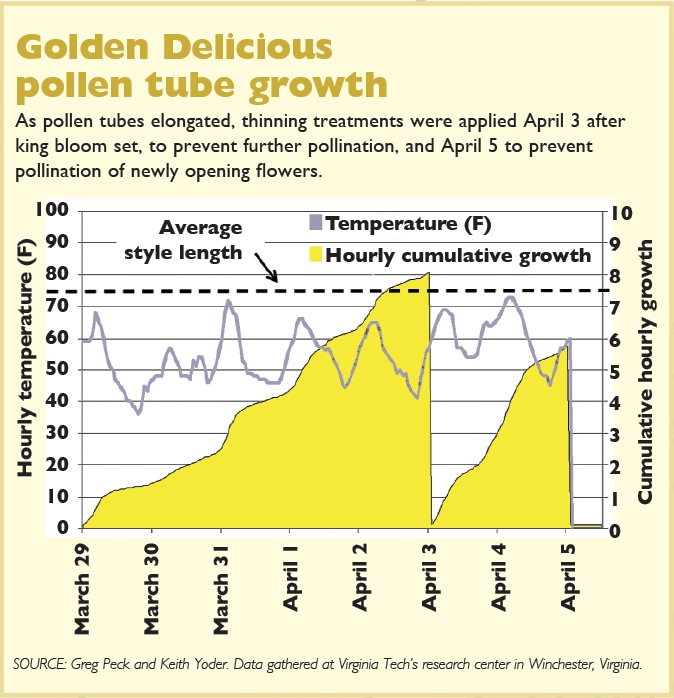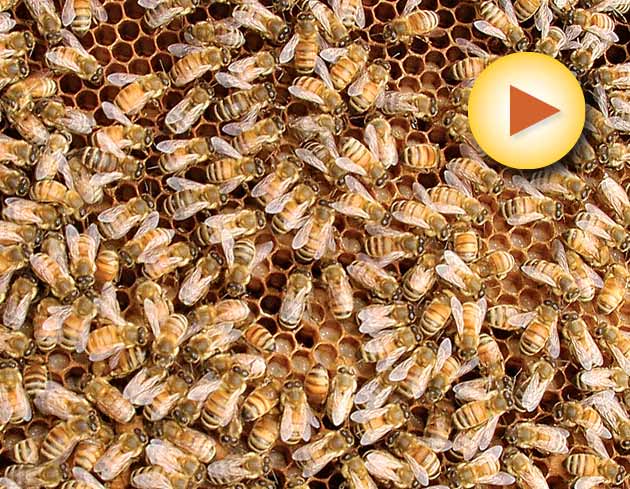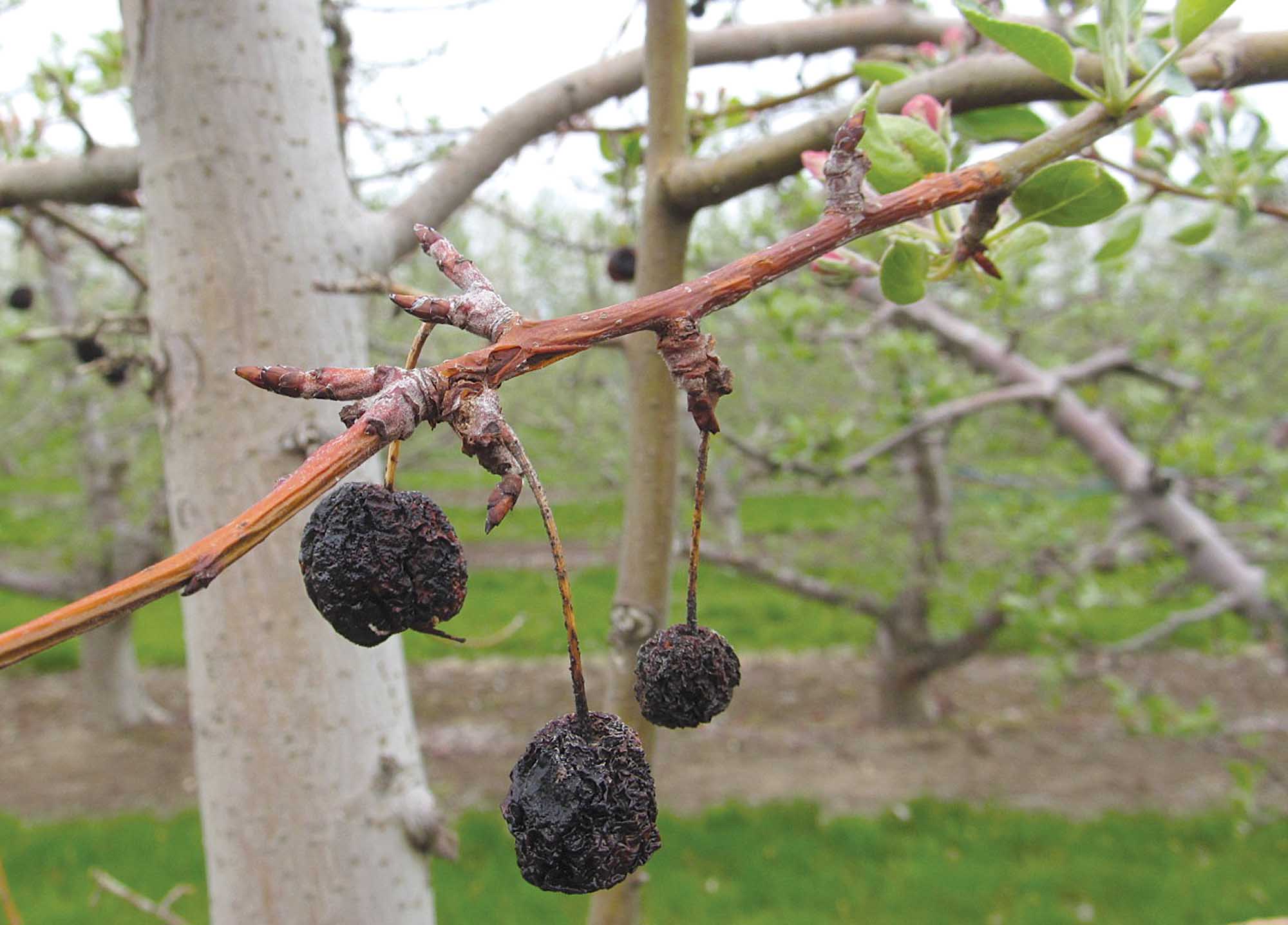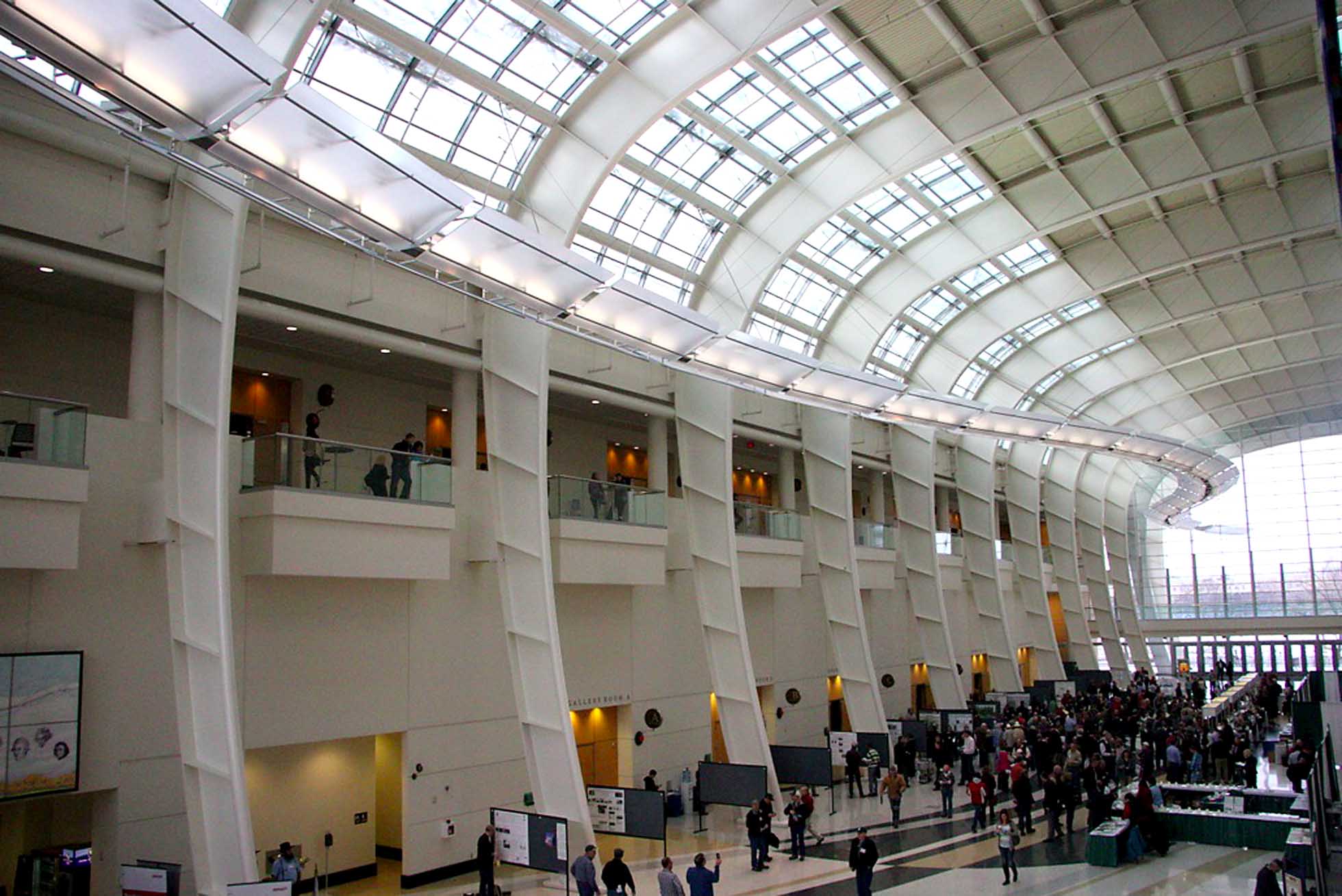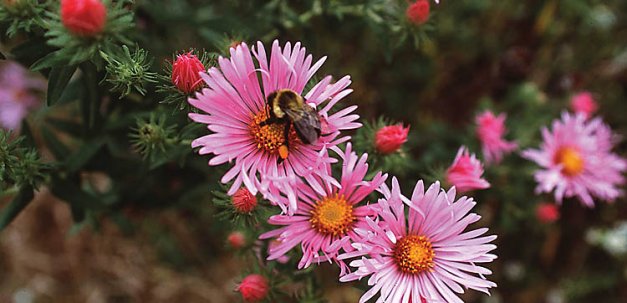ADVERTISEMENT
Acclaimed honey bee geneticist receives UC Davis Distinguished Emeritus Award
Robert E. Page Jr. (Courtesy University of California, Davis) Internationally acclaimed honey bee
Mid-Atlantic blueberry growers wanted for survey
The survey takes about 2 to 3 minutes and is available for blueberry growers until Sept. 1.
The new buzz for blossoms
Drones won’t replace bees for pollination, but they may help.
Trees without fruit, pollination without bees
Pollen company joins Washington State University researcher to try planting a pollen-only orchard.
Protect pollinators while managing diseases
The fungicides needed to control bloom time disease aren’t as harmless to bees as previously thought.
A better bee? Blue orchard bees show promise as pollinators
Study shows potential for employing blue orchard bees as pollinators in tart cherries. What about other crops?
Bees may do better being kept in the dark
CA storage could give bees an edge in the fight against the devastating Varroa mite.
Hive hauling worries
A load of honeybees arrives from California in April 2017 at Olson Orchards in
GLExpo Day 3 wrap: using plant growth regulators for flowering, fruit set, and other aspects of physiology
Things were a little quieter on the final day of the Great Lakes Fruit, Vegetable
GLExpo Day 1 wrap: pests, pollinators and soil microbes
For tree fruit growers, the first day of the Great Lakes Fruit, Vegetable, and Farm
Bee haulers get delay in complying with new federal rules
The federal government has granted truckers who haul live animals, including honeybees destined for tree fruit pollination duty, a 90-day reprieve from enforcement of electronic logging device requirements.
The global fire blight fight
Belgian researchers at pcfruit are examining biocontrols and detection methods for fire blight.
Mite threatening honeybees in New York
A tiny mite is being blamed for major honeybee losses in New York, threatening the state’s $500 million agriculture industry.
Grower says bloom thinning by hand gets the results he wants
Let hands take hold
Help for blossom thinning
Better crop management models available for Honeycrisp, Granny Smith and Red Delicious.
Researcher convinced he can replace honeybees
WSU horticulturist secures three more years of funding for mechanical pollination research.
Fighting honeybee decline with instrumental insemination — Video
WSU researchers hope to breed better bees
A new, old bee
From high in the Tien Shan Mountains of Central Asia, Washington State University entomologists Steve Sheppard and Brandon Hopkins have brought home semen from a new strain of honeybees that evolved right alongside the wild apple tree.
How busy are your bees?
New model will predict pollinator efficiency and fruit set.
What wildflowers are best to attract bees?
Michigan State University pollination study reveals best attractants for bees that you may want to plant near your trees.
Discussion in Seattle March 29: Exploring how mushrooms can help bees survive
Can the mushroom hold a key to survival of honeybees? That topic is the focus of
Orchard Bee Association meets Dec. 9 in Hood River
The Orchard Bee Association is meeting Dec. 9 in Hood River, Oregon. Here's their announcement:
Canadian bee expert joins OSU
Andony Melathopoulos, Extension pollinator specialist, watches honey bees at OSU's Oak Creek Center for
Bee health studies examine neonicotinoid risks
WSU trial finds “very low risks,” while England study shows bee species suffer from the pesticide.
No bees, but a lot of buzz about artificial pollination (video)
https://youtu.be/bEXK9Bk73Eg Pollination comes with problems. Bloom dates don’t overlap, honeybee colonies fail, weather doesn’t cooperate.
6 tips for healthier bees
Beekeeper offers tips for healthy bees, hearty pollination.
Looking for new pollinizers
For decades, apple growers have used Manchurian crab apples to pollinate their fruit. Tree
Testing string theory
Hand-held string thinners are gaining in popularity.
Are fall-blooming apples curiosity or concern?
Growers can curb ill-timed blooms caused by weather patterns.
Domesticating mason bees
Mason bees are being propagated to supplement honeybees.
More bees lost in summer than winter
(Courtesy Doug Walsh) Twenty-three percent of managed honeybee colonies were lost during the
Take the guesswork out of thinning
A predictive model enables growers to be in a planning mode rather than a crisis mode at chemical thinning time.
Precision pollination
Mechanical pollination could end use of chemicals or hand labor for thinning.
Bees as flying doctors
Honeybees deliver brown rot control to sweet cherry orchards.
Breeding better bees
WSU researchers hope to make honeybees more resilient by introducing genetic diversity.
Research tackles decay issue
A new project will focus on controlling decay and finding pollinizers that are not disease hosts.
Selenium is toxic to bees
Entomologists from the University of California, Riverside, have found that selenium can cause delays in development and mortality in honeybees.
Best practices for pollination
Six practices to help ensure successful pollination.
Bees are driving pesticide decisions
The desire to protect bees is becoming institutionalized.
Mechanical thinning can damage spurs, leaf tissue and flowers
A tractor mounted Darwin thinning device. (file photo) Mechanical thinning looks like a
Bee renting tips
Smith helps growers and beekeepers come together agreeably
How bad things in the environment gang up and kill bees
The synergistic effect of pesticides in hives.
Is there a better crab apple pollinizer?
No research is under way to evaluate pollinizers to replace Manchurian crab apple.
Pollen tube growth model makes thinning more precise
Blossom-time apple thinning model explored for eastern growers.
Bees live in a toxic world
Planting more flowers would help solve honeybee decline.
More food for honeybees
Landowners in the upper Midwest have until March 21 to apply for assistance under a
Managing crab apple diseases
Crab apple disease management starts in the orchard with pruning.
Michigan’s Expo draws record crowd
Speakers focus on threats to bees, funds for experiment stations, and fruiting walls.
Bee Informed Partnership
After five years of annual colony losses near or above 30 percent, beekeepers have settled
Safe havens for pollinators
A bumblebee finds nectar in a wildflower planting. PHOTOS COURTESY OF USDA NATURAL RESOURCES CONSERVATION


